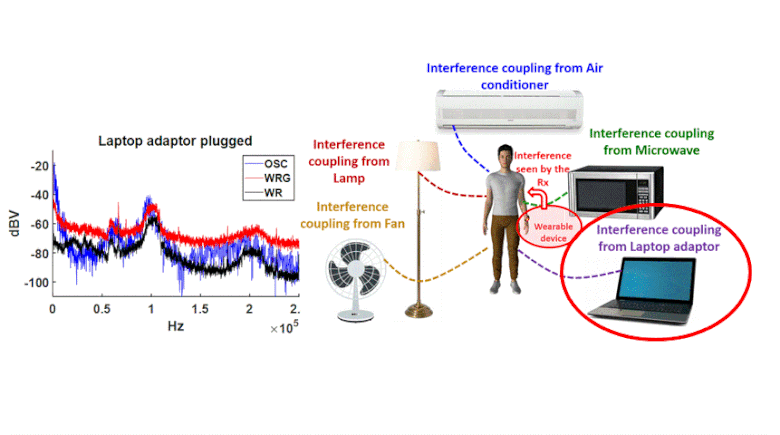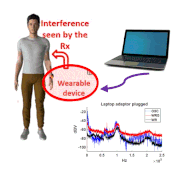
Electro Quasi-Static Human Body Communication (EQS-HBC) is an emerging communication technique that utilizes the conductive medium of the human body to achieve energy efficient and physically secure electronic communication for wearable devices in the sub-10MHz frequency of operation. Previous works that characterized interference in HBC traditionally used bench-top measurement equipment which results in significantly pessimistic measurements (as the ground size of the device is orders of magnitude larger than a wearable). This is evident in the works baseline comparison as the custom-built device showed a 20dB lower noise floor than traditional oscilloscope and RF spectrum analyzer-based measurements.
Experiments were carried out in multiple environments and over many months to identify potential interference sources in various environments. For the first time, characterizations were conducted “In-The-Wild” (home, office and outdoors) and environments carefully deconstructed to isolate each interference source. A model was developed to provide additional insight into other potential interference sources and the various biophysical parameters (i.e., distance from source) that affect the amount of interference a wearable device can detect on the body. These interference sources include CLF lamps, air conditioning units, microwaves, mobile devices, laptops, and AC adapters. Measurement results are presented for a part of the EQS-HBC range (0-250kHz) annotated with the respective interferences introduced by the various sources alongside baseline characterizations from within an anechoic chamber.
This paper presents a novel biophysical model and characterization techniques that can guide future studies on the channel and present a model with measurements outside of the lab from a wearable for the first time. It can also provide insight for device using EQS-HBC on how to mitigate or avoid interferences by exploring the source and coupling nature.

